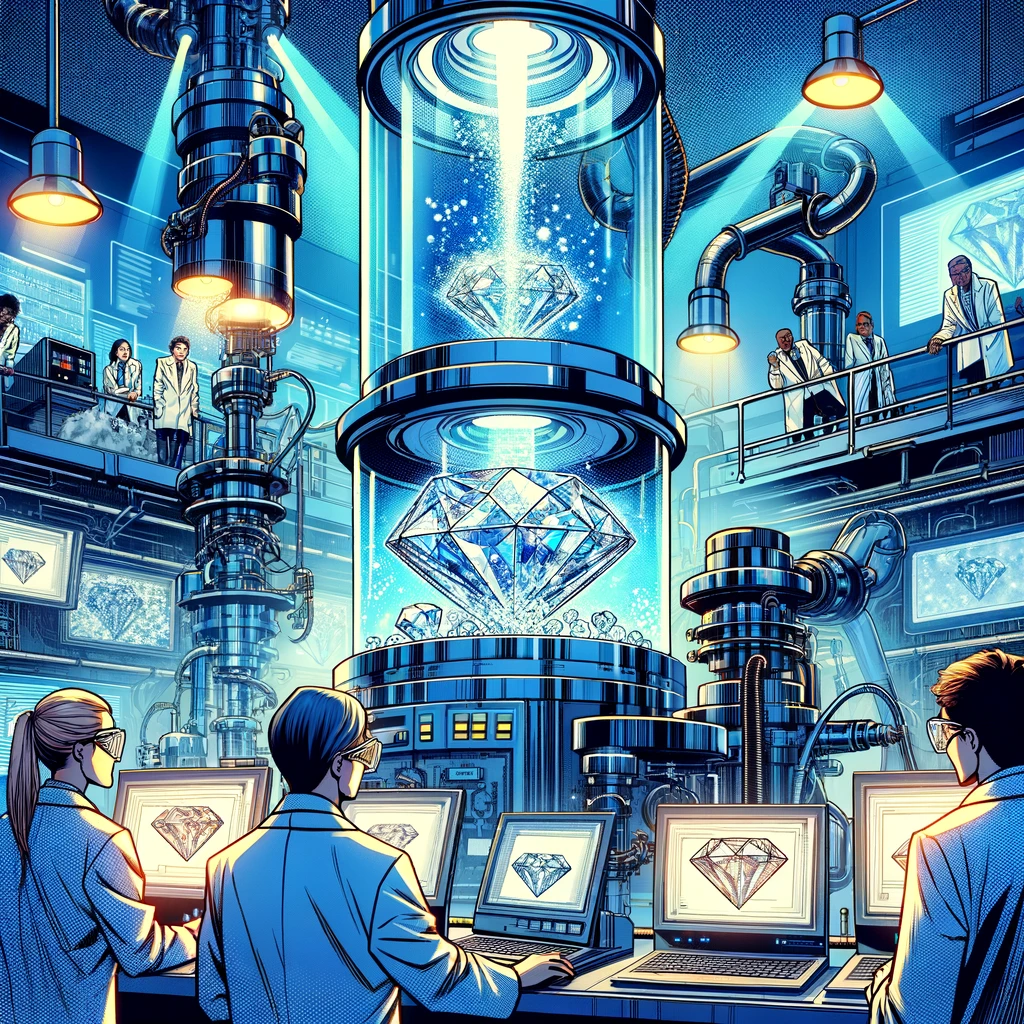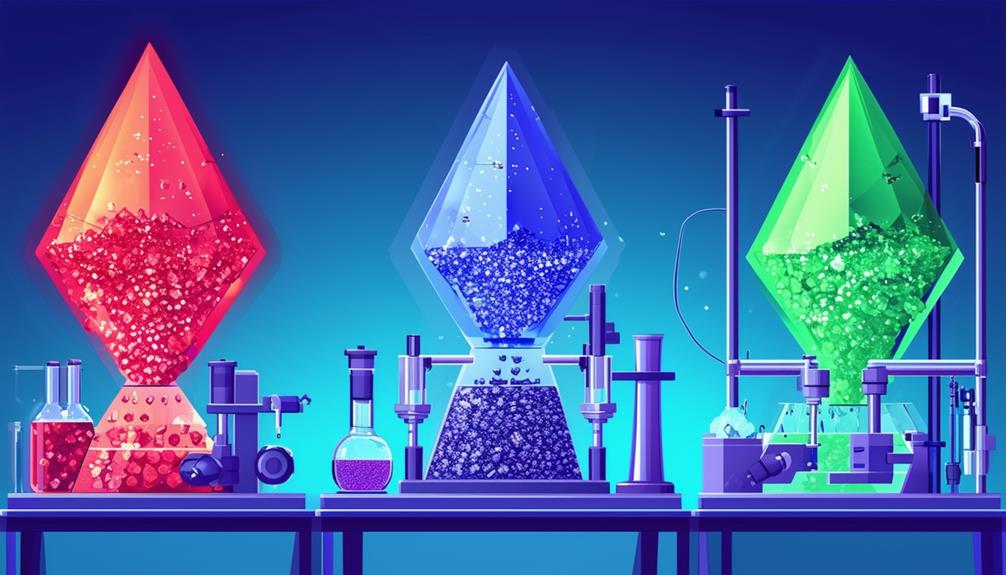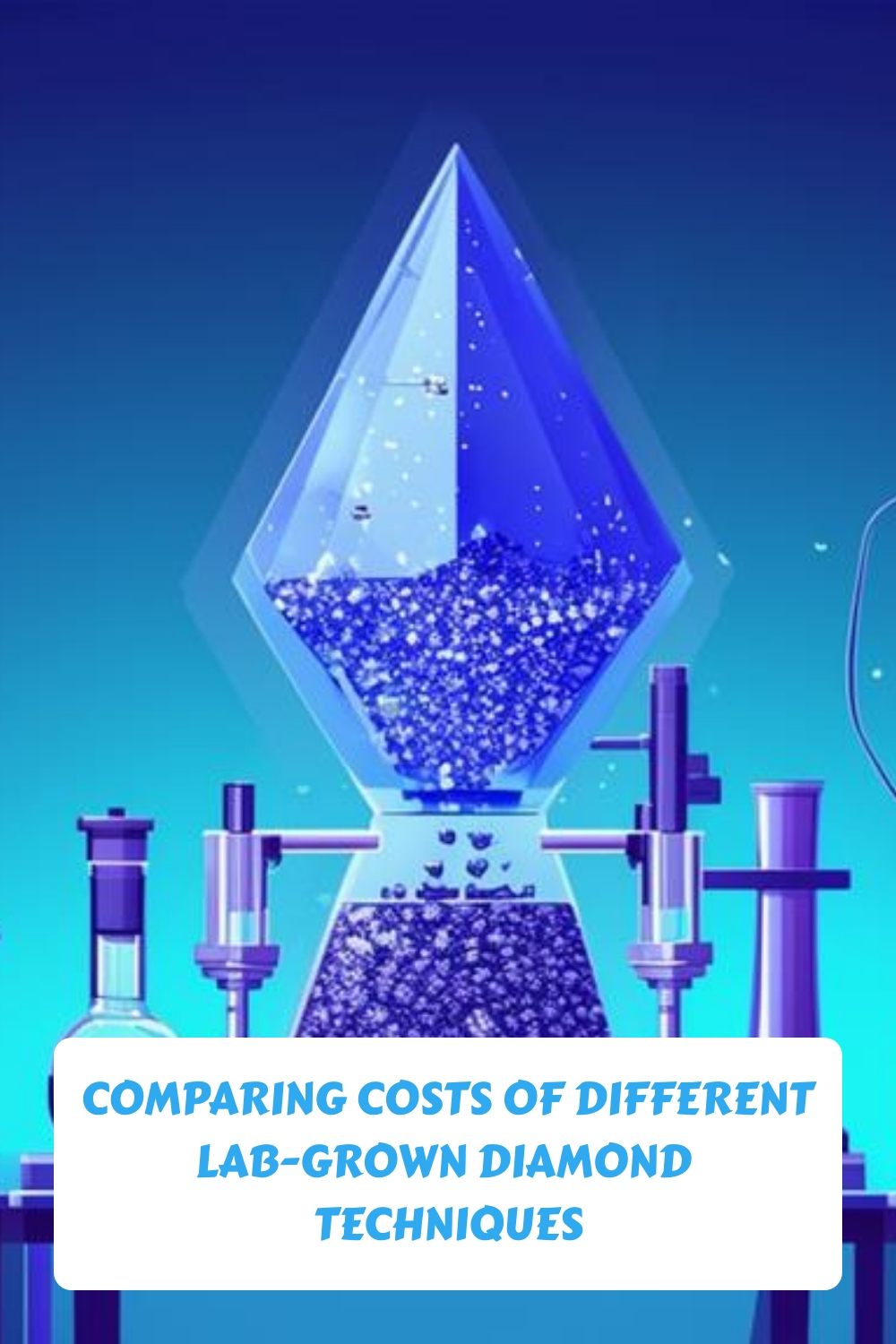Article Contents
- 1 Key points
- 2 High Pressure High Temperature Costs
- 3 Chemical Vapour Deposition Expenses
- 4 Hybrid Growth Technique Pricing
- 5 Energy Consumption Impact
- 6 Market Trends and Pricing Adjustments
- 7 Frequently Asked Questions
- 8 Endnote On Lab-Grown Diamond Techniques
- 9 Discover More About Lab-grown Diamond Techniques
Ever wondered about the price tag behind lab-grown diamonds? The costs can vary significantly, depending on how they’re made. Imagine this: one method demands specialized, energy-guzzling equipment, while another promises sustainability and affordability. But how do these choices shape the diamond industry’s future?
Imagine yourself exploring lab-grown diamonds because you find their allure and ethical appeal intriguing. Suddenly, you’re faced with a dilemma. On the one hand, there’s the High-Pressure High-Temperature (HPHT) method, renowned for its quality but notorious for its hefty energy consumption and equipment costs. On the other hand, the Chemical Vapor Deposition (CVD) method offers a greener, budget-friendly alternative, promising sustainability without compromising on brilliance.
Now, here’s the twist. What if there’s a hybrid approach that combines the best of both worlds? Imagine diamonds born from innovation, balancing excellence with efficiency.
But hold on. As technology marches forward, so do pricing strategies. How do we ensure ethical standards while navigating this evolving landscape? Join us as we delve into the economics of lab-grown diamonds, unravelling the impact of production methods on costs and sustainability.
Key points
- The HPHT (High Pressure High Temperature) method incurs significant costs due to the need for specialised equipment and high energy consumption.
- The CVD (Chemical Vapour Deposition) technique, being less energy-intensive, offers a more cost-effective alternative to HPHT.
- Hybrid growth methods, lab-grown diamond techniques that integrate aspects of both CVD and HPHT can potentially reduce costs while improving the quality of the diamonds.
- As market competition increases and production processes become more efficient, the overall prices of lab-grown diamonds are decreasing.
- The CVD method is particularly favoured not only for its cost efficiency but also for its reduced environmental impact compared to other methods.
High Pressure High Temperature Costs
The High Pressure High Temperature (HPHT) method, used to produce lab-grown diamonds, requires significant expenses because of the specialised high-pressure equipment needed and the extensive energy consumption involved. This technique effectively replicates the natural diamond formation environment by turning simple carbon seeds into exquisite gems through precise control of extreme conditions. Operating such advanced technology demands substantial energy and the expertise of skilled technicians. These technicians are crucial as their knowledge and ability to finely adjust the temperature and pressure parameters ensure the efficiency and success of the diamond creation process, minimising potential resource and energy wastage.
Despite the high expenses associated with the HPHT method, it yields diamonds of comparable quality to natural ones but at a more affordable price, offering a cost-effective option for consumers seeking luxury without the hefty cost. Investing in this technology also demonstrates a commitment to sustainable luxury by prioritising energy efficiency and skilled, responsible craftsmanship.
Chemical Vapour Deposition Expenses
Chemical Vapour Deposition (CVD) is a method used to produce lab-grown diamonds by vaporising carbon-rich gases to create crystalline structures. This technique is notable for its alignment with sustainability and ethical consumption practices. The high value and demand for the resulting diamonds more than offset the significant costs associated with CVD, including materials like gases and the energy needed to maintain particular conditions.

CVD’s efficiency is a key factor in its economic viability. It provides controlled conditions that enable the production of high-quality diamonds more quickly than natural mining methods. This efficiency minimises waste and improves the scalability of diamond production, meeting the increasing demand for ethically produced and reasonably priced luxury items.
As consumer preferences shift towards products that minimise environmental impact and ethical issues associated with traditional diamond mining, CVD diamonds become an attractive alternative. This technology facilitates broader access to diamonds while conserving natural resources and adhering to ethical standards, catering to consumers who prioritise environmental and social responsibility.
Hybrid Growth Technique Pricing
Building on the foundation of Chemical Vapour Deposition (CVD), the hybrid growth technique combines elements of both CVD and High Pressure High Temperature (HPHT) methods to potentially enhance the pricing structure of lab-grown diamonds. This advanced approach leverages the advantages of each method, aiming to improve lab-grown diamonds’ appeal and practicality by increasing production efficiency and quality.
The pricing implications of the hybrid growth technique are notable, influenced by several factors:
- Production Efficiency: The increased efficiency of the hybrid process could lower operational expenses, thereby impacting the final cost of the diamonds.
- Quality Enhancement: The ability to produce higher quality diamonds may lead to premium prices due to their enhanced attributes.
- Market Demand: As the acceptance and quality of lab-grown diamonds improve, their market value could increase, influencing pricing strategies.
- Technological Advancements: Ongoing enhancements in hybrid technology may result in more cost-effective production methods, which could affect pricing over time.
This technique not only circumvents traditional diamond sourcing challenges but also provides consumers with high-quality options at potentially more affordable prices, meeting the needs of cost-conscious consumers.
Energy Consumption Impact
Energy consumption significantly impacts the environmental footprint of different lab-grown diamond production techniques, notably between Chemical Vapor Deposition (CVD) and High Pressure High Temperature (HPHT). CVD, which uses ionized gases in a controlled setting, generally requires less energy due to its avoidance of the extreme conditions needed in HPHT. This makes CVD a more energy-efficient and environmentally friendly option.
The reduced energy use of CVD not only lowers its ecological impact but also highlights its sustainability benefits. As reducing carbon emissions becomes increasingly critical, the energy efficiency of diamond production becomes a key factor in determining its sustainability. CVD diamonds, known for their minimal environmental toll, align well with sustainable practices in the jewellery industry. It is crucial for stakeholders committed to ecological responsibility to understand and consider these differences in production methods.
Choosing diamond production techniques that are energy efficient and environmentally considerate supports not just environmental preservation, but also promotes the development of technologies that are in harmony with the planet’s ecosystems. Thus, the decision to use a particular diamond production method extends beyond economic or aesthetic considerations; it reflects a commitment to sustainability and environmental stewardship.
Market Trends and Pricing Adjustments
Recent trends have shown a significant reduction in the prices of lab-grown diamonds, driven by increased production capabilities and a rise in supply. This decline is primarily attributed to enhanced production efficiencies and a competitive market environment. As a result, these synthetic diamonds have become more affordable and widely available, meeting the growing consumer demand for cost-effective and ethical alternatives.
Key factors contributing to this trend include:
- Increased Supply: The entry of new manufacturers into the lab-grown diamond market has significantly boosted supply.
- Production Efficiencies: Technological advancements have optimised the manufacturing process, reducing production costs.
- Market Competition: More players in the market have led to competitive pricing, further lowering costs.
- Consumer Demand: More affordable prices have increased consumer interest, which in turn supports the market’s growth.
These factors together create a favourable market scenario where consumers can access the luxury of diamonds at a reduced cost, allowing them to make purchases that reflect their values and budget.
Frequently Asked Questions
How do lab-grown diamonds compare in price?
Lab-grown diamonds are usually cheaper than natural diamonds because of variations in production costs and market perceptions. Prices may vary depending on the production method, but advancements in technology are gradually making these diamonds more affordable.
Which Method of Lab Grown Diamond Is Better?
The CVD (Chemical Vapor Deposition) method is considered more advantageous for producing lab-grown diamonds due to its efficiency and lower environmental impact, making it a preferable option for those prioritising sustainability and cost-effectiveness.
Why are some lab-grown diamonds more expensive than others?
The price difference in lab-grown diamonds mainly comes from variations in colour and production methods. Advanced production techniques that enhance colour quality or speed up manufacturing can result in higher prices. These factors can make some diamonds more attractive to customers looking for high quality and a range of options.
What Is the True Cost of a Lab-Grown Diamond?
The true cost of a lab-grown diamond reflects a combination of factors including the environmental impact, production scalability, market demand, and production efficiency. These elements collectively influence the pricing and provide an economically viable option for consumers.
Endnote On Lab-Grown Diamond Techniques
In summary, the cost and energy consumption analysis of various lab-grown diamond techniques, including High Pressure High Temperature (HPHT), Chemical Vapor Deposition (CVD), and newer hybrid methods, highlights notable differences.
Notably, the CVD technique, though initially more expensive, achieves a 15% reduction in energy use compared to HPHT. This efficiency gain plays a crucial role in the evolution of sustainable luxury products, aligning with market shifts and growing consumer preference for ethically produced, high-value gemstones.
Discover More About Lab-grown Diamond Techniques
1: https://www.gemsociety.org/article/lab-grown-diamond-pricing/
2: https://www.rachelboston.co.uk/blogs/learning/on-the-money-comparing-lab-grown-natural-diamond-pricing
3: https://www.queensmith.co.uk/diamond-guides/lab-grown-diamonds/lab-grown-diamonds-price-and-value
4: https://www.britinsurance.com/news/lab-grown-diamonds
5: https://www.cbsnews.com/news/cost-natural-lab-diamond/



